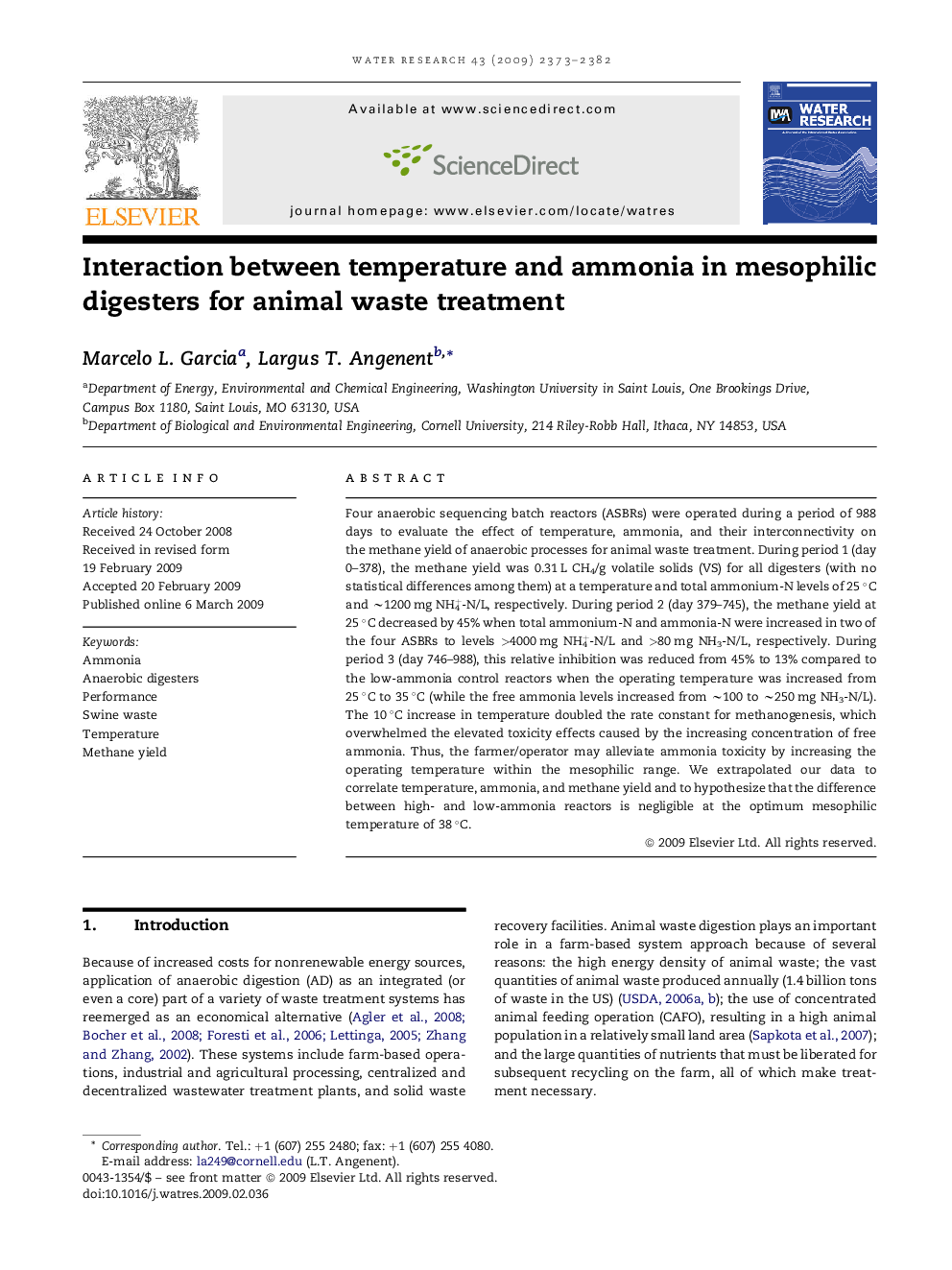| Article ID | Journal | Published Year | Pages | File Type |
|---|---|---|---|---|
| 4484857 | Water Research | 2009 | 10 Pages |
Four anaerobic sequencing batch reactors (ASBRs) were operated during a period of 988 days to evaluate the effect of temperature, ammonia, and their interconnectivity on the methane yield of anaerobic processes for animal waste treatment. During period 1 (day 0–378), the methane yield was 0.31 L CH4/g volatile solids (VS) for all digesters (with no statistical differences among them) at a temperature and total ammonium-N levels of 25 °C and ∼1200 mg NH4+-N/L, respectively. During period 2 (day 379–745), the methane yield at 25 °C decreased by 45% when total ammonium-N and ammonia-N were increased in two of the four ASBRs to levels >4000 mg NH4+-N/L and >80 mg NH3-N/L, respectively. During period 3 (day 746–988), this relative inhibition was reduced from 45% to 13% compared to the low-ammonia control reactors when the operating temperature was increased from 25 °C to 35 °C (while the free ammonia levels increased from ∼100 to ∼250 mg NH3-N/L). The 10 °C increase in temperature doubled the rate constant for methanogenesis, which overwhelmed the elevated toxicity effects caused by the increasing concentration of free ammonia. Thus, the farmer/operator may alleviate ammonia toxicity by increasing the operating temperature within the mesophilic range. We extrapolated our data to correlate temperature, ammonia, and methane yield and to hypothesize that the difference between high- and low-ammonia reactors is negligible at the optimum mesophilic temperature of 38 °C.
